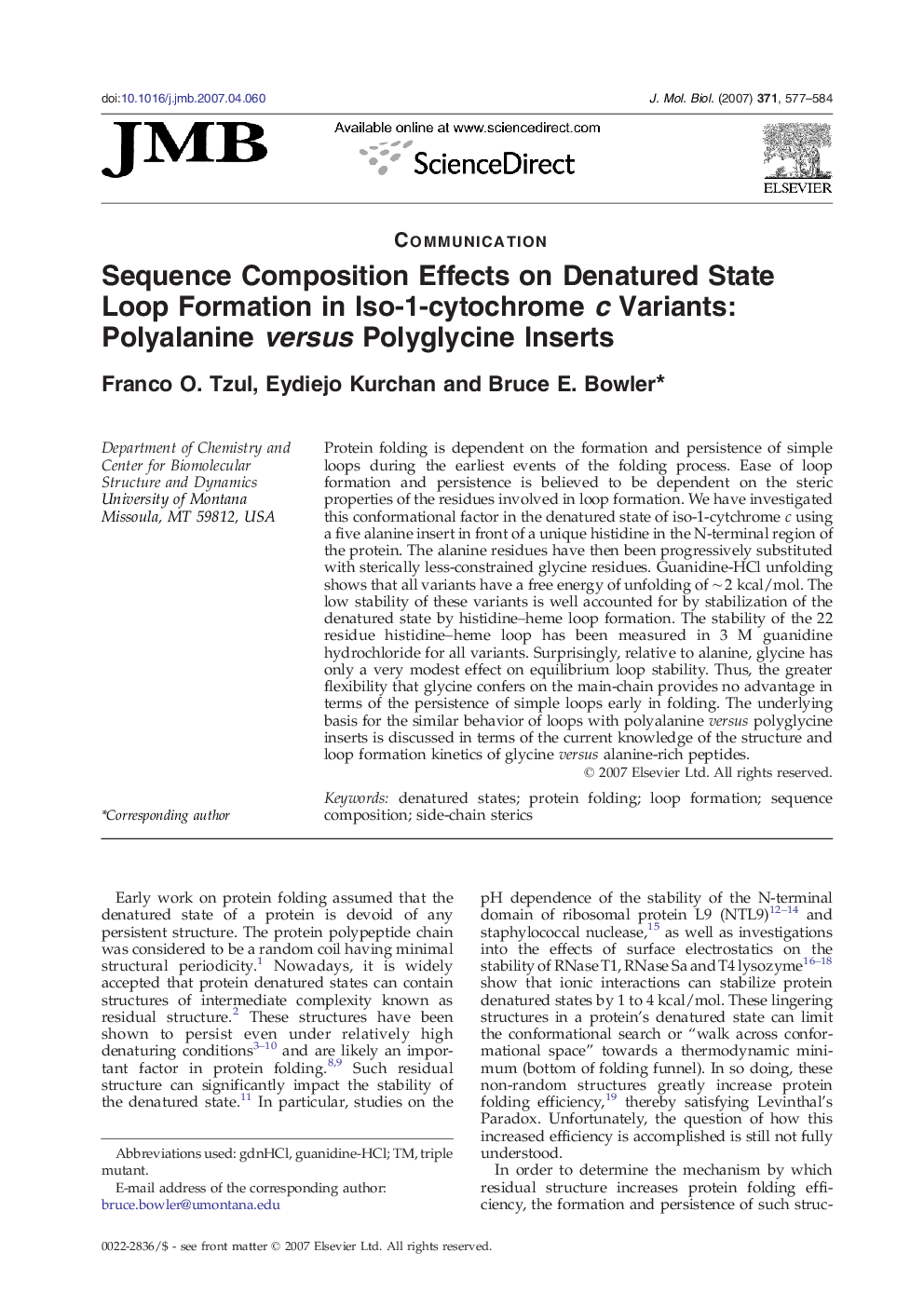| Article ID | Journal | Published Year | Pages | File Type |
|---|---|---|---|---|
| 2188104 | Journal of Molecular Biology | 2007 | 8 Pages |
Protein folding is dependent on the formation and persistence of simple loops during the earliest events of the folding process. Ease of loop formation and persistence is believed to be dependent on the steric properties of the residues involved in loop formation. We have investigated this conformational factor in the denatured state of iso-1-cytchrome c using a five alanine insert in front of a unique histidine in the N-terminal region of the protein. The alanine residues have then been progressively substituted with sterically less-constrained glycine residues. Guanidine-HCl unfolding shows that all variants have a free energy of unfolding of ∼ 2 kcal/mol. The low stability of these variants is well accounted for by stabilization of the denatured state by histidine–heme loop formation. The stability of the 22 residue histidine–heme loop has been measured in 3 M guanidine hydrochloride for all variants. Surprisingly, relative to alanine, glycine has only a very modest effect on equilibrium loop stability. Thus, the greater flexibility that glycine confers on the main-chain provides no advantage in terms of the persistence of simple loops early in folding. The underlying basis for the similar behavior of loops with polyalanine versus polyglycine inserts is discussed in terms of the current knowledge of the structure and loop formation kinetics of glycine versus alanine-rich peptides.
